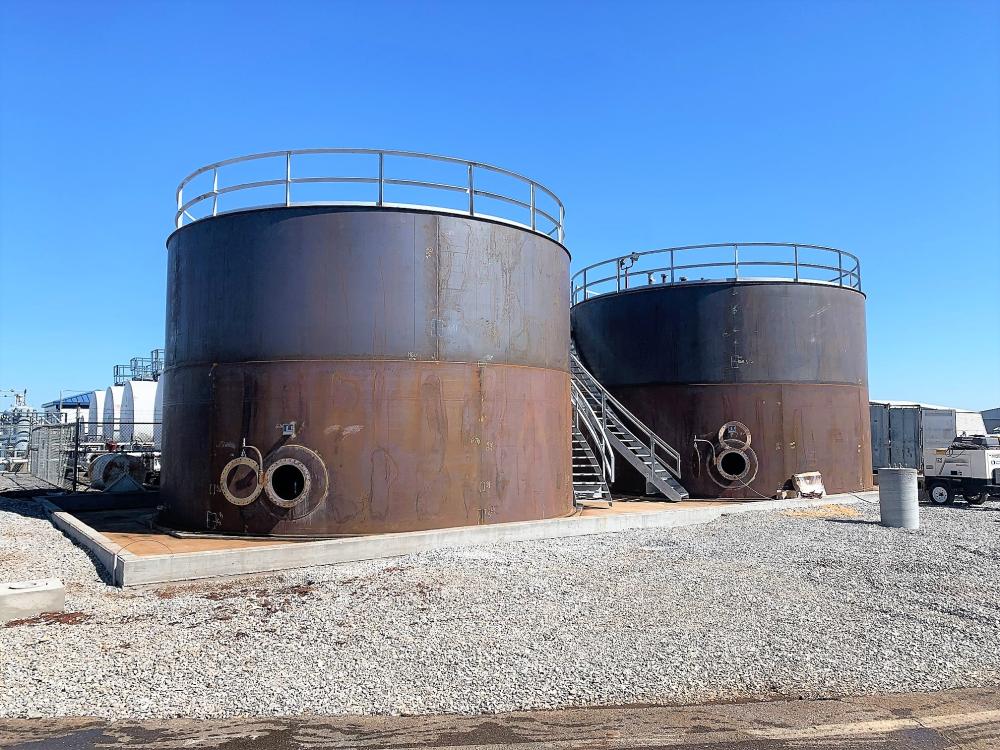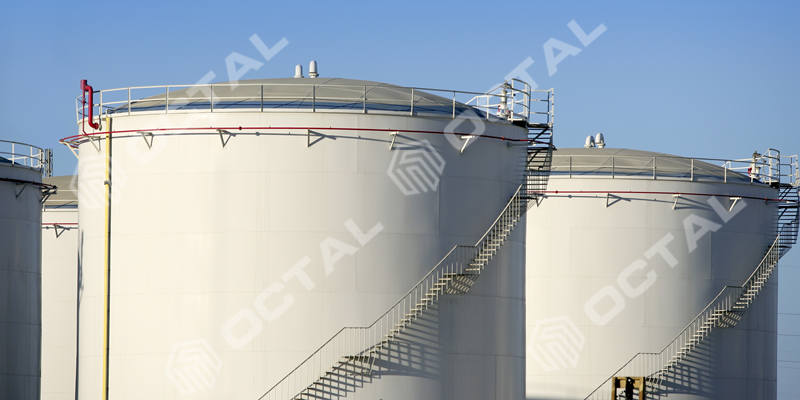Mastering the Fundamentals Behind API 650 Welding Inspection Standards
Wiki Article
Everything About Welding Examination: Trick Benefits for Your Projects
Welding inspection plays an essential role in the construction and manufacturing industries. It guarantees that bonded joints satisfy top quality and safety requirements. By recognizing problems early, tasks can avoid significant delays and financial losses. Sticking to sector standards not only secures the integrity of the final item however additionally constructs trust among stakeholders. Comprehending the nuances of this procedure exposes fringe benefits that can influence job end results considerably. What are these benefits?Recognizing the Welding Assessment Process
Although welding is a vital component in numerous industries, the inspection procedure is necessary to assure high quality and safety and security. This procedure includes a series of methodical evaluations made to recognize any potential concerns that may compromise the stability of welded joints. Assessors assess welding treatments and qualifications to validate conformity with industry criteria.Following this, aesthetic examinations are carried out to examine the overall appearance and surface of welds. Non-destructive screening techniques, such as ultrasonic or radiographic screening, might additionally be used to find internal flaws without harming the product. Documents plays an important role, as it gives a document of assessments and findings, validating traceability and responsibility.
Eventually, understanding the welding examination process cultivates self-confidence in the quality of the completed item, lowers the danger of failures, and enhances general project success in various applications, from construction to manufacturing. API 650 Welding Inspection.
Common Sorts Of Welding Defects
Welding issues can significantly impact the stability and performance of bonded frameworks, as they might result in failings under tension or negative conditions. Common kinds of welding defects consist of fractures, porosity, insufficient fusion, and slag inclusion. Cracks can form as a result of thermal tensions or improper cooling, endangering the joint's stamina. Porosity refers to the presence of gas bubbles caught in the weld, which can damage the joint and reduce ductility. Incomplete blend occurs when the weld steel does not effectively bond with the base material, causing vulnerable points. Slag inclusion happens when non-metallic contaminations come to be caught within the weld, bring about a decrease in structural stability. Identifying these problems early with examination is vital for keeping top quality and guaranteeing safety in welded frameworks. Recognizing these usual defects permits enhanced welding strategies and enhanced task end results.Importance of Compliance With Sector Standards
Conformity with market criteria is necessary for keeping architectural stability in welding projects. Sticking to these standards not only minimizes obligation dangers yet also enhances the overall high quality of the completed job. This alignment promotes depend on among stakeholders and warranties that projects meet both safety and efficiency assumptions.Ensuring Structural Stability
Assuring architectural stability is paramount in any kind of building or production task, as adherence to market criteria serves as a structure for safety and dependability. Conformity with these requirements guarantees that welding refines meet strenuous specifications, which is important for the sturdiness of structures. Regular welding evaluations confirm that materials and techniques align with established standards, preventing possible failings that could jeopardize honesty. Additionally, adhering to market criteria promotes uniformity in quality, which is vital for keeping public count on building and construction techniques. By focusing on architectural integrity via thorough adherence to criteria, organizations can boost the overall efficiency of their projects, leading to more secure atmospheres and prolonged asset life expectancies. Ultimately, this commitment shows a proactive technique to high quality guarantee in welding techniques.Lowering Liability Threats
Abiding by sector requirements considerably minimizes responsibility dangers connected with welding jobs. Compliance with developed standards assurances that welds satisfy safety and efficiency requirements, minimizing the probability of failures that might result in crashes or litigation. This proactive technique not just shields the workforce but additionally safeguards the economic interests of the business. Ineffective techniques or poor inspections can result in pricey repair services, legal disagreements, and damages to credibility. By implementing rigorous welding evaluations, companies demonstrate their commitment to top quality and safety and security, ultimately lessening exposure to potential insurance claims. Additionally, adherence to guidelines strengthens trust amongst customers and stakeholders, as it suggests a dedication to preserving high standards throughout the task lifecycle. Minimizing liability threats is vital for lasting organization sustainability.Enhancing Job Quality
Rigorous welding assessments not just minimize obligation risks but also play an essential role in boosting overall project top quality. By sticking to industry standards, these assessments assure that welds fulfill specified standards for security, durability, and stamina. Conformity with established standards helps identify defects early, reducing the probability of costly rework or project delays. Constant quality control cultivates trust amongst stakeholders, consisting of clients and regulative bodies, which can lead to duplicate organization and positive referrals. Ultimately, a dedication to high-quality welding techniques not only improves the stability of the last item however additionally maintains the credibility of the company entailed. Subsequently, thorough assessments act as a keystone for successful and sustainable task end results.
Advantages of Very Early Discovery of Issues
Early detection of welding issues uses substantial benefits, especially relating to price financial savings on repairs. By recognizing problems before they rise, companies can improve the architectural integrity of their tasks. This proactive strategy not just minimizes economic expenses yet likewise advertises safety and reliability in bonded frameworks.
Expense Financial Savings on Services
Detecting welding issues promptly can result in significant price financial savings on repairs. Early identification of issues permits targeted treatments, decreasing the level of damages and avoiding expensive, considerable fixings later. When troubles are official statement dealt with throughout the first stages of a job, resources are utilized a lot more effectively, decreasing both labor and product prices. Additionally, prompt evaluations can avoid task delays, which frequently sustain additional costs. By fixing issues early, firms can avoid the financial burden associated with rework, warranty cases, and potential security dangers. Inevitably, buying proactive welding evaluations cultivates a more economical approach to task administration, making certain that budgets continue to be undamaged while keeping the quality and integrity of the end product.Enhanced Architectural Integrity
Guaranteeing the architectural integrity of welded components pivots on the timely recognition of possible issues. Early detection during the welding inspection process permits for the instant correction of issues such as splits, spaces, or improper fusion. Dealing with these concerns immediately not only enhances the strength and resilience of the weld yet additionally reduces the risk of catastrophic failings throughout the life span of the structure. Regular examinations add to a more reputable evaluation of weld quality, guaranteeing compliance with sector standards. By prioritizing welding evaluations, project managers can maintain a greater degree of safety and security and performance, eventually resulting in successful project outcomes. Enhanced structural honesty mirrors the dedication to top quality and adherence to finest practices in welding.Cost-Effectiveness of Welding Inspections
While several firms might view welding assessments as an additional expense, they frequently confirm to be an economical investment in the future. By recognizing defects early, these evaluations can avoid costly repair services or replacements that may emerge from undetected problems. This positive method not just conserves cash yet likewise minimizes project delays, ensuring that timelines are stuck to.
Additionally, top quality welding examinations add to improved effectiveness, bring about less rework circumstances and improved efficiency. The reduction in material waste and labor expenses linked with redesigning malfunctioning welds includes to the monetary advantages.
Spending in extensive assessments likewise improves the general top article quality of the final product, which can bring about raised client satisfaction and repeat service. Eventually, the preliminary expenses connected with welding evaluations are typically exceeded by the lasting cost savings and advantages they give, making them a wise option for any kind of welding project.
Enhancing Safety And Security and Integrity in Welding Projects

Welding assessments play a necessary role in improving security and integrity within welding projects, as they systematically recognize prospective hazards and weaknesses in welds. By employing certified assessors, companies can assure that welding processes abide by industry criteria and regulative demands. This proactive technique lessens the risk of weld failings, which can result in mishaps, expensive repair work, and project hold-ups.
In addition, evaluations offer crucial paperwork that confirms conformity and top quality assurance, cultivating trust fund in between stakeholders. Regular analyses during different job phases permit the timely detection of issues, making it possible for restorative activities prior to they intensify. Furthermore, the insights obtained from assessments add to constant enhancement in welding methods, enhancing overall project end results. Inevitably, durable welding evaluation protocols not only safeguard workers but additionally guard investments, assuring that jobs are finished successfully and fulfill the highest safety and reliability criteria.
Often Asked Concerns
What Certifications Should a Welding Examiner Have?
A welding assessor should have appropriate accreditations, such as Certified Welding Assessor (CWI), along with comprehensive knowledge of welding codes, materials, and procedures. API 650 Welding Inspection. Experience in the field and solid logical skills are additionally crucial for reliable inspectionsExactly How Frequently Should Welding Inspections Be Conducted?
Welding inspections ought to be performed regularly, generally previously, during, and after the welding process. The regularity may depend on job specs, governing demands, and the intricacy of the welds to ensure structural honesty and safety.Can Welding Inspections Be Done Remotely?
Welding assessments can certainly be executed from another location, making use of innovative modern technologies such as drones, cameras, discover here and ultrasonic testing devices - API 650 Welding Inspection. This strategy enables for reliable monitoring while decreasing the need for physical visibility at the siteWhat Equipment Are Utilized in Welding Inspections?
Welding examinations utilize numerous tools, including ultrasonic testers, magnetic particle testers, visual inspection devices, radiographic tools, and calipers. Each device offers a specific function to guarantee weld stability, top quality, and compliance with industry criteria.Exactly how Do I Pick a Welding Evaluation Service?

To choose a welding evaluation solution, one must examine qualifications, experience, and accreditations. Furthermore, evaluating customer testimonies and requesting detailed solution summaries can help assure the picked service fulfills details project needs efficiently.
By focusing on welding assessments, task supervisors can keep a higher level of security and performance, inevitably leading to successful project outcomes. Welding evaluations play a crucial duty in enhancing safety and dependability within welding tasks, as they methodically identify possible risks and weaknesses in welds. A welding inspector should possess appropriate qualifications, such as Certified Welding Examiner (CWI), along with extensive understanding of welding codes, procedures, and products. Welding examinations should be conducted on a regular basis, typically before, throughout, and after the welding procedure. Welding assessments use different devices, consisting of ultrasonic testers, magnetic bit testers, visual assessment devices, radiographic devices, and calipers.
Report this wiki page